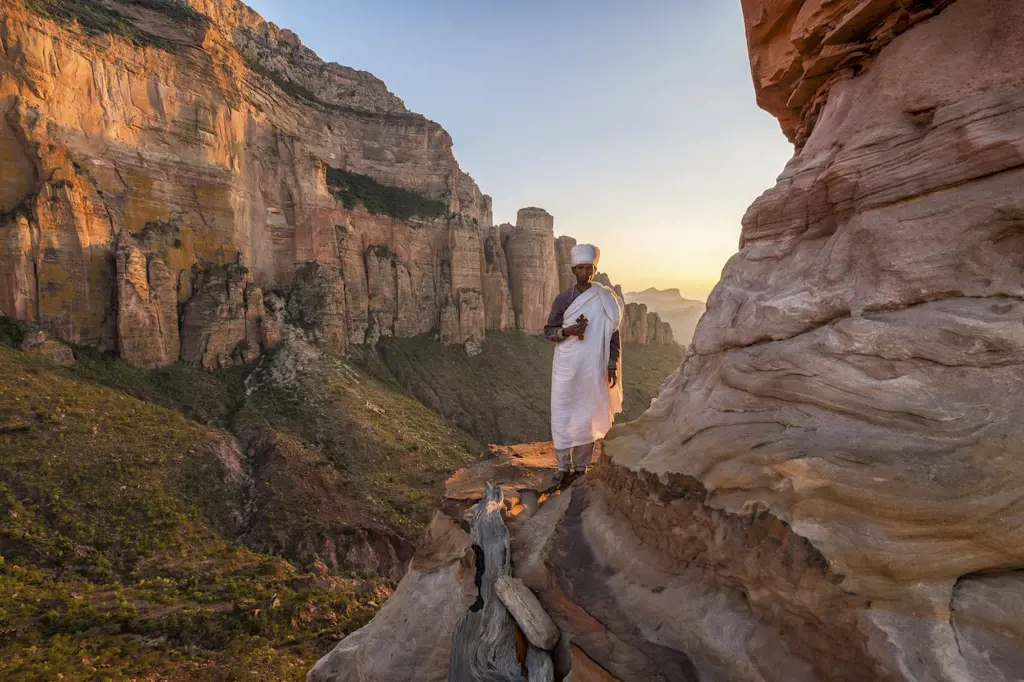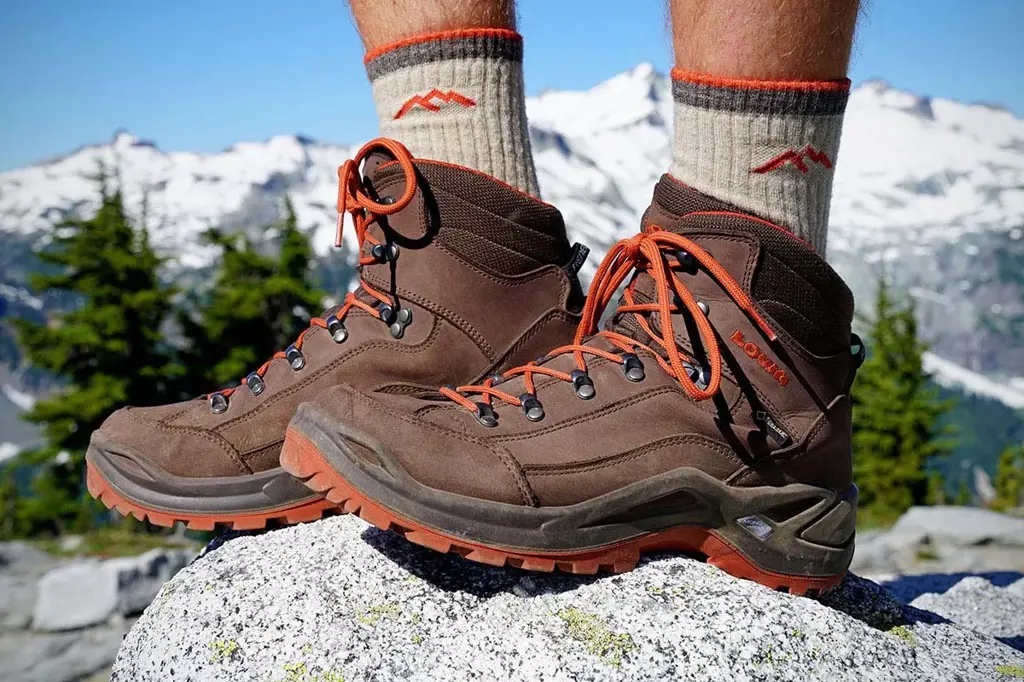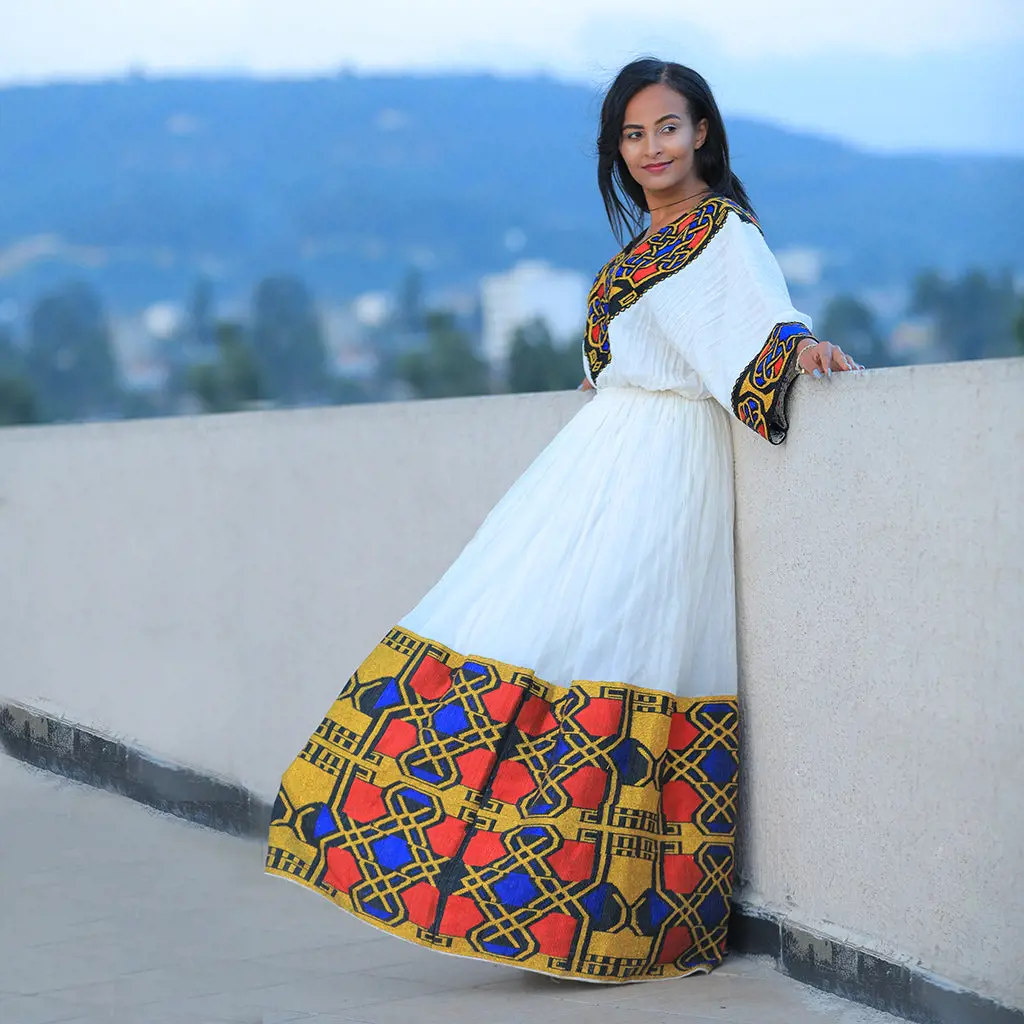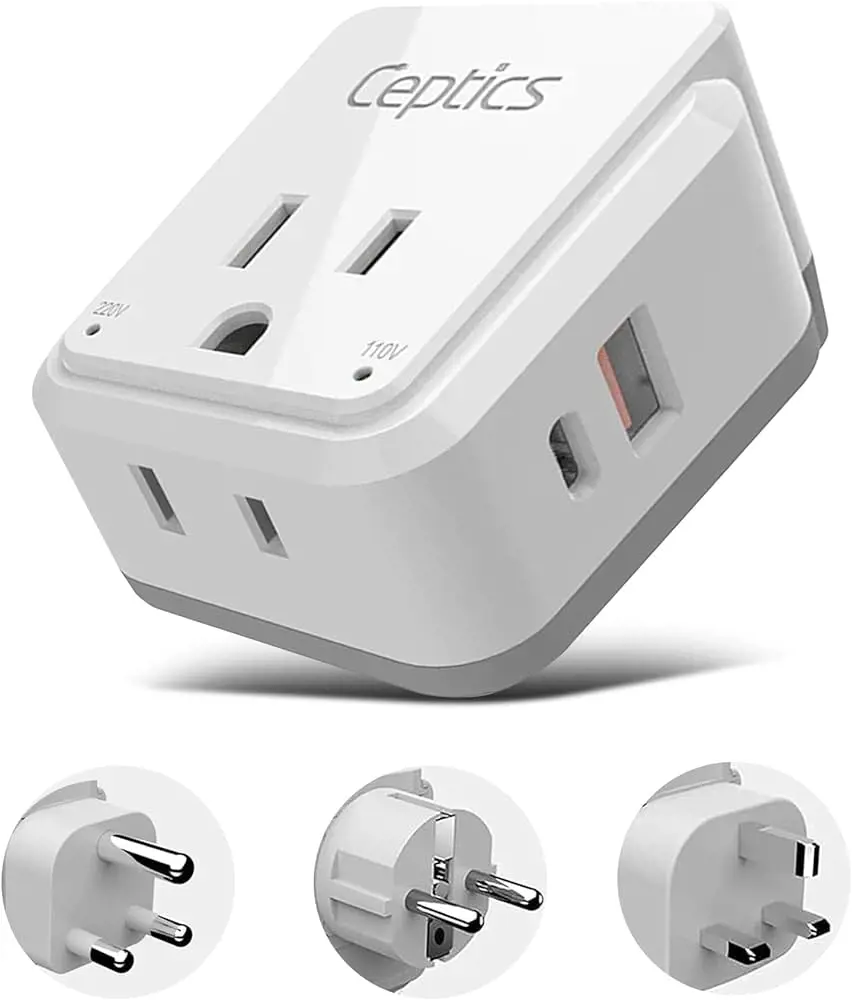
Planning a trip to Ethiopia? Whether you're a seasoned traveler or it's your first time visiting this stunning East African country, it's important to pack the right essentials to ensure a comfortable and enjoyable journey. From the rugged landscapes of the Simien Mountains to the ancient ruins of Axum, Ethiopia offers a wide range of attractions for adventurous travelers. In this guide, we'll explore the essential items you should pack for your trip to Ethiopia, helping you make the most of your time in this extraordinary destination.
What You'll Learn
- What are the must-pack clothing items for a trip to Ethiopia?
- Are there any specific medical supplies or medications that should be included when packing for Ethiopia?
- What type of footwear is recommended for exploring the terrain in Ethiopia?
- Are there any cultural considerations when deciding what to pack for a trip to Ethiopia?
- Is it necessary to bring a power adapter or converter for electronics when traveling to Ethiopia?

What are the must-pack clothing items for a trip to Ethiopia?

When planning a trip to Ethiopia, it is important to pack clothing items that are both practical and respectful of the local culture. Located in East Africa, Ethiopia has a diverse climate ranging from hot and humid lowlands to cool and dry highlands, so it is important to pack accordingly. Here are some essential clothing items to include in your suitcase for a trip to Ethiopia:
- Lightweight and breathable clothing: Due to Ethiopia's warm climate, it is important to pack lightweight and breathable clothing. Opt for materials such as cotton or linen that will help keep you cool and comfortable. Loose-fitting clothing is also recommended to allow for better air circulation.
- Long-sleeved shirts and pants: In addition to lightweight clothing, it is advisable to pack long-sleeved shirts and pants to protect yourself from the sun and to avoid insect bites. Mosquitoes, in particular, can be a concern in some areas of Ethiopia, so covering your skin can help prevent bites and potential diseases like malaria.
- Sweater or jacket: Ethiopia's highlands, such as the Simien Mountains or Lalibela, can get chilly, especially at night. It is therefore advisable to pack a sweater or jacket to keep warm during cooler temperatures or when visiting higher altitude areas.
- Comfortable walking shoes: Ethiopia is a country with rich history and natural beauty, which often requires some walking and hiking. Be sure to pack comfortable and sturdy walking shoes that are well-suited for different terrains. Sandals or flip-flops can also be handy for when you are relaxing or exploring in more relaxed environments.
- Headscarf: When visiting religious sites or participating in cultural ceremonies, it is respectful to cover your head with a headscarf or shawl. This is particularly important for women, as it shows respect for local customs and traditions.
- Swimwear: If you plan to visit the popular lakes in Ethiopia, such as Lake Tana or Lake Langano, don't forget to pack swimwear. These lakes offer stunning natural settings and are great for swimming and relaxation.
- Sunscreen and hat: The Ethiopian sun can be intense, especially at higher altitudes. Protect yourself from sunburn by packing sunscreen with a high SPF and a wide-brimmed hat to shield your face from the sun's rays.
- Rain jacket or umbrella: Ethiopia has distinct rainy seasons. If you are traveling during these periods, it is important to pack a rain jacket or travel-size umbrella to protect yourself from unexpected showers.
It is worth noting that Ethiopia is a primarily conservative country with a strong religious influence. It is respectful to dress modestly and avoid wearing revealing clothing, particularly when visiting religious sites and rural areas.
In summary, when packing for a trip to Ethiopia, it is important to consider the country's varying climate and cultural norms. Opt for lightweight, breathable clothing, and pack long-sleeved shirts and pants to protect yourself from the sun and insects. Don't forget to include a sweater or jacket for cooler temperatures and comfortable walking shoes for exploring Ethiopia's diverse landscapes. Lastly, be respectful of local customs by packing a headscarf and dressing modestly when visiting religious sites.
Essential Clothing and Gear Every Man Should Pack for a Trip to Australia
You may want to see also

Are there any specific medical supplies or medications that should be included when packing for Ethiopia?

When traveling to Ethiopia, it is important to be prepared and pack the necessary medical supplies and medications to ensure a safe and healthy trip. In addition to basic first aid items, there are a few specific medical supplies and medications that you should consider including in your travel kit.
One of the most important items to pack is a water purification system. While tap water in major cities may be safe to drink, it is recommended to purify all water sources in rural areas. This can be done using water purification tablets or a portable water filter. These items will help prevent waterborne diseases such as cholera and typhoid fever.
Another essential medical supply to pack is mosquito repellent. Ethiopia is located in a malaria-prone region, so it is important to take precautions to avoid mosquito bites. Use a repellent that contains DEET or another effective ingredient, and apply it to exposed skin before going outdoors. Additionally, consider packing a mosquito net for extra protection while sleeping.
If you have any pre-existing medical conditions, it is essential to bring an adequate supply of your prescribed medications. Make sure to carry them in their original packaging, along with a copy of your prescription. It is also a good idea to bring a written list of your medications, including their generic names and dosages, in case you need to seek medical assistance while in Ethiopia.
In addition to your regular medications, it may also be wise to pack over-the-counter medicines for common travel ailments. These include pain relievers, antacids, anti-diarrheal medications, and band-aids. It is important to note that some medications may not be readily available in Ethiopia, so it is best to bring a sufficient supply.
If you plan to hike or engage in any outdoor activities, it is important to have a well-stocked first aid kit. This should include items such as adhesive bandages, gauze pads, medical tape, sterilizing wipes, tweezers, and scissors. Having these supplies on hand can help treat minor injuries and prevent them from becoming infected.
When packing medical supplies and medications for your trip to Ethiopia, it is essential to consider the climate and activities you will be participating in. Doing so will help ensure that you are prepared for any potential health issues that may arise. It is always a good idea to consult with a travel health specialist or your healthcare provider before your trip to obtain specific recommendations based on your individual needs.
Essential Items to Pack for the Bride on Her Wedding Day
You may want to see also

What type of footwear is recommended for exploring the terrain in Ethiopia?

When exploring the diverse terrain of Ethiopia, it is important to have the right footwear to ensure comfort, safety, and to enhance your overall experience. Ethiopia boasts a wide range of landscapes, from rugged mountains to vast deserts, lush forests to volcanic landscapes. Each terrain requires specific characteristics in footwear to tackle the challenges it presents.
When it comes to exploring the mountainous regions of Ethiopia, such as the Simien Mountains or the Bale Mountains, sturdy hiking boots with ankle support are highly recommended. These boots provide stability, protect your ankles from sprains and twists, and offer excellent traction on uneven and slippery surfaces. Look for boots with a waterproof or water-resistant feature to keep your feet dry in case of unexpected rain or crossing streams.
For trekking through the desert regions, lightweight hiking shoes or trail running shoes are a popular choice. These shoes provide a comfortable and flexible option for traversing the sandy areas. It is crucial to have a shoe with good ventilation to prevent overheating, as desert temperatures can soar during the day. Additionally, consider shoes with a closed toe design to protect your feet from sharp rocks and thorny vegetation.
When exploring the dense forests of Ethiopia, like the Kaffa Biosphere Reserve or the Omo Forest, it is advisable to wear hiking boots or trail shoes with good grip and ankle support. These boots will protect your feet from potential injuries caused by uneven terrain, hidden tree roots, and slippery surfaces. It is also important to choose shoes made of breathable materials to prevent excessive sweating and discomfort.
Ethiopia is home to several volcanic landscapes, such as the Danakil Depression and the Erta Ale volcano. When exploring these areas, it is crucial to have sturdy hiking boots with heat-resistant soles. The extreme heat and rough terrain can be challenging, and the right footwear will provide the necessary protection and stability.
In general, regardless of the specific terrain you plan to explore in Ethiopia, it is essential to choose footwear that fits well and offers excellent traction. Investing in quality hiking socks will enhance the overall comfort and prevent blisters. It is also recommended to break in your shoes before embarking on any intense exploration to avoid discomfort and foot pain during your adventure.
To summarize, when exploring the diverse terrains of Ethiopia, the recommended footwear choices include sturdy hiking boots with ankle support for mountainous regions, lightweight hiking shoes or trail running shoes for deserts, hiking boots or trail shoes for forests, and heat-resistant hiking boots for volcanic landscapes. Remember to select footwear that provides optimal grip, stability, and protection to ensure a safe and enjoyable exploration experience.
The Ultimate Packing Guide for a Trip to Kauai in March
You may want to see also

Are there any cultural considerations when deciding what to pack for a trip to Ethiopia?

When planning a trip to Ethiopia, it is important to take into consideration the local culture and customs. Ethiopia is a country with a rich and diverse culture, and respecting and understanding these cultural norms is essential for a successful and enjoyable trip.
One of the most important cultural considerations when deciding what to pack is to dress modestly. Ethiopia is a conservative country with strong religious beliefs, and it is important to respect these traditions by covering up. Both men and women should aim to wear clothing that covers their shoulders and knees, and women should avoid wearing low-cut tops or revealing clothing. It is also a good idea to bring a scarf or shawl to cover your head or shoulders when visiting religious sites.
Another cultural consideration is to pack appropriate footwear. In Ethiopia, it is common to remove your shoes when entering someone's home or a place of worship. It is also considered polite to remove your shoes when entering traditional houses or huts, which are common in rural areas. As such, it is a good idea to pack shoes that are easy to slip on and off, such as sandals or loafers.
When packing for a trip to Ethiopia, it is also important to consider the climate and geography of the country. Ethiopia is a landlocked country with diverse landscapes, ranging from high mountains to arid deserts. It is important to pack clothing that is suitable for the specific region and time of year you will be visiting. In general, it is a good idea to pack lightweight and breathable clothing for the hot and dry highland regions, and warmer clothing for the cooler mountainous areas.
It is also worth noting that Ethiopia is a developing country, and access to certain items may be limited. It is recommended to pack any necessary medications, toiletries, and other personal items that you may need during your trip. It is also a good idea to bring a reusable water bottle and water purification tablets, as tap water is not always safe to drink.
In conclusion, when deciding what to pack for a trip to Ethiopia, it is important to take into consideration the local culture and customs. Dressing modestly, packing appropriate footwear, considering the climate and geography, and being prepared for limited access to certain items are all important factors to keep in mind. By respecting and understanding the local culture, you will have a more meaningful and enjoyable experience in Ethiopia.
Essential Items to Pack for Teaching in Korea
You may want to see also

Is it necessary to bring a power adapter or converter for electronics when traveling to Ethiopia?

When traveling to Ethiopia, it is important to be prepared with the necessary power adapters or converters for your electronics. Ethiopia uses the Type C/E/F power outlets, which have a voltage of 220-240 volts and a frequency of 50 Hz.
If your electronics are designed to work with this voltage and frequency, you may only need a plug adapter to convert the shape of the plug to fit the Ethiopian outlets. However, it is always recommended to double-check the voltage and frequency requirements of your devices to avoid any potential damage.
If your electronics are not compatible with the Ethiopian voltage and frequency, you will need a power voltage converter. This device will convert the voltage output from the Ethiopian outlets to match the requirements of your electronics. It is important to choose a converter that can handle the wattage of your devices to ensure they operate safely and efficiently.
Here are some steps to help you prepare for traveling to Ethiopia:
- Check the voltage and frequency requirements of your electronics: Look for the voltage and frequency specifications on the labels or user manuals of your devices. This information will help you determine if you need a power adapter or converter.
- Purchase the necessary power adapters or converters: You can find power adapters and converters at electronics stores, travel stores, or online retailers. Make sure to choose adapters and converters that are compatible with the Type C/E/F outlets used in Ethiopia.
- Test your adapters and converters: Before your trip, plug your devices into the adapters or converters to ensure they are working properly. This will help you avoid any surprises or difficulties while abroad.
- Pack your adapters and converters: Make sure to bring your power adapters or converters with you in your carry-on luggage. It is also a good idea to have backup adapters or converters in case one malfunctions or gets lost.
- Use your adapters and converters in Ethiopia: Once you arrive in Ethiopia, simply plug your electronics into the adapters or converters, and then plug them into the Ethiopian outlets. Your devices should now work properly with the Ethiopian electrical system.
Examples of when power adapters or converters are necessary include charging your laptop, using a hairdryer, or charging camera batteries. These devices often have specific voltage and frequency requirements and may not be compatible with the Ethiopian electrical system without the use of a power adapter or converter.
In conclusion, it is necessary to bring a power adapter or converter for your electronics when traveling to Ethiopia. By checking the voltage and frequency requirements of your devices and purchasing the appropriate adapters or converters, you can ensure that your electronics work safely and efficiently while abroad.
Essential Items to Pack for Your Vacation to Nassau, Bahamas
You may want to see also
Frequently asked questions
When packing for a trip to Ethiopia, it's important to consider the weather and the activities you'll be doing. Lightweight, breathable clothing is essential, as temperatures can be quite hot. However, it's also a good idea to pack some warmer layers for cooler evenings or if you plan to visit higher altitude areas. Additionally, be sure to pack comfortable walking shoes, a hat, sunglasses, and sunscreen to protect yourself from the strong African sun.
Yes, it is highly recommended to bring insect repellent when traveling to Ethiopia. Mosquitoes and other insects can be common, especially in certain regions or during specific seasons. Using insect repellent will help protect you from mosquito-borne diseases like malaria and dengue fever.
It is not safe to drink tap water in Ethiopia. It is advisable to drink bottled or purified water to avoid getting sick. You can easily find bottled water in most hotels, restaurants, and shops. It's also a good idea to bring a reusable water bottle that you can fill up with purified water to reduce plastic waste.
Yes, when visiting religious sites in Ethiopia, it is important to dress modestly out of respect for the local customs and traditions. Both men and women should avoid wearing revealing clothing, and women may also be expected to cover their hair with a scarf or shawl. It's a good idea to have a lightweight, long-sleeved shirt or dress and a skirt or pants that cover the knees.
If you plan on hiking or trekking in Ethiopia, it's important to pack appropriate gear. This includes sturdy hiking boots or shoes with good traction, moisture-wicking socks, and lightweight, quick-drying clothing. It's also a good idea to bring a hat, sunglasses, and sunscreen to protect yourself from the sun, as well as a backpack with plenty of water, snacks, and a first aid kit. Don't forget a good quality rain jacket or poncho in case of unexpected rain showers.







